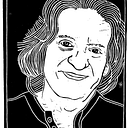Member-only story
The Open Road
When automobiles first appeared in the early 1900s, they were enjoyed exclusively by the rich and privileged. In 1901, there were 23,000 cars in the country compared to 17 million horses. The few available roads were either cobblestone or dirt “mud traps.” Private for-profit clubs emerged to build roads accessible to members. Nine of those clubs joined together in Chicago to form the Automobile Club in 1902.
With the advent of Henry Ford’s Model T in 1908, cars became available to the masses. Cities and towns built their own asphalt roads but there was no organization on a national level. Rural voters lobbied for road construction using the slogan, “Get farmers out of the mud!” The Federal-Aid Road Act of 1916 promised to improve road quality but World War I intervened and work was largely scrapped.
The Federal Highway Act of 1925 sought to resolve confusion between state and local routes. Highways were given a numerical designation. North to south highways were odd numbered, west to east highways were even numbered. Redundant numerical highways were renamed.
In 1921, Cornelius Vanderbilt Jr. took a five-month road trip with his wife to the West Coast after their wedding. He wrote an essay in Motor magazine called “The Democracy of the Motor Car.” He wrote that he met “every possible type of person in the world” arguing for the wide distribution of inexpensive cars to…
